Economy
Trump to add another 25% tariff on India over Russian oil purchases
President Donald Trump issued an executive order Wednesday to place an additional 25% tariff on India over its imports of Russian oil, bringing the combined duties imposed by the United States on its ally to 50%.
The additional tariffs mean India will face the highest levy along with Brazil, putting it at a significant disadvantage against regional competitors such as Vietnam and Bangladesh.
The duties would go into effect 21 days after the signing of the order, meaning that both India and Russia might have time to negotiate with the Trump administration on the import taxes.
The move threatens to further complicate U.S.-Indian relations and comes shortly after an Indian government source said Prime Minister Narendra Modi would visit China for the first time in over seven years later this month.
The total rate will be a “big negative for Indian exports,” said A Prasanna, head of research at ICICI Securities Primary Dealership.
“Many Indian exports will face a handicap versus countries that are in the 15%-30% bucket,” Prasanna said.
First signaled by Trump on Monday, the order follows meetings by Trump’s top diplomatic envoy Steve Witkoff in Moscow aimed at pushing Russia to agree to peace in Ukraine.
Trump has threatened higher tariffs on Russia and secondary sanctions on its allies if Russian President Vladimir Putin does not move to end the war in Ukraine.
As the pressure mounts, India may agree to significantly reduce Russian purchases in a phased manner and diversify to other sources, said Teresa John, an economist at Nirmal Bang Institutional Equities, a Mumbai-based brokerage.
Trump’s moves could scramble the economic trajectory of India, which until recently was seen as an alternative to China by American companies looking to relocate their manufacturing. China also buys oil from Russia, but it was not included in the order signed by the Republican president.
As part of a negotiating period with Beijing, Trump has placed 30% tariffs on goods from China, a rate that is smaller than the combined import taxes with which he has threatened New Delhi.
Trump had previewed for reporters on Tuesday that the tariffs would be coming, saying the U.S. had a meeting with Russia on Wednesday as the Trump administration tries to end the war in Ukraine.
“We’re going to see what happens,” Trump said about his tariff plans. “We’ll make that determination at that time.”
‘Hypocritical’ decision
The Indian government on Wednesday called the additional tariffs “unfortunate.”
“We reiterate that these actions are unfair, unjustified and unreasonable,” Foreign Ministry spokesperson Randhir Jaiswal said in a statement, adding that India would take all actions necessary to protect its interests.
Jaiswal said India has already made its stand clear that the country’s imports were based on market factors and were part of an overall objective of ensuring energy security for its 1.4 billion people.
Ajay Srivastava, a former Indian trade official, said the latest tariff places the country among the most heavily taxed U.S. trading partners and far above rivals such as China, Vietnam and Bangladesh.
“The tariffs are expected to make Indian goods far costlier with the potential to cut exports by around 40%-50% to the U.S.,” he said.
Srivastava said Trump’s decision was “hypocritical” because China bought more Russian oil than India did last year.
“Washington avoids targeting Beijing because of China’s leverage over critical minerals which are vital for U.S. defense and technology,” he said.
In 2024, the U.S. ran a $45.8 billion trade deficit in goods with India, meaning America imported more from India than it exported, according to the U.S. Census Bureau. American consumers and businesses buy pharmaceutical drugs, precious stones and textiles and apparel from India, among other goods.
At the world’s largest country, India represented a way for the U.S. to counter China’s influence in Asia. But India has not supported the Ukraine-related sanctions by the U.S. and its allies on Moscow, even as India’s leaders have maintained that they want peace.
The U.S. and China are currently in negotiations on trade, with Washington imposing a 30% tariff on Chinese goods and facing a 10% retaliatory tax from Beijing on American products.
The planned tariffs on India contradict past efforts by the Biden administration and other nations in the Group of Seven (G-7) leading industrialized nations that encouraged India to buy cheap Russian oil through a price cap imposed in 2022. The nations collectively capped Russian oil a $60 per barrel at a time when prices in the market were meaningfully higher,
The intent was to deprive the Kremlin of revenue to fund its war in Ukraine, forcing the Russian government either to sell its oil at a discount or divert money for a costly alternative shipping network.
The price cap was rolled out to equal parts skepticism and hopefulness that the policy would stave off Putin’s invasion of Ukraine.
The cap has required shipping and insurance companies to refuse to handle oil shipments above the cap, though Russia has been able to evade the cap by shipping oil on a “shadow fleet” of old vessels using insurers and trading companies located in countries that are not enforcing sanctions.
But oil prices have fallen, with a barrel trading on Wednesday morning at $65.84, up 1% on the day.
Economy
Consortium with Turkish firms inks $4B deal to develop Damascus Airport
A five-company consortium led by Qatar’s UCC Holding and comprising three Turkish firms signed a $4 billion deal on Wednesday with the Syrian Civil Aviation Authority to develop and expand Damascus International Airport.
The deal was one of several agreements signed in Damascus during a ceremony attended by Syrian interim President Ahmed al-Sharaa, worth $14 billion, including infrastructure, transportation and real estate projects aimed at reviving the war-damaged economy.
Turkish companies Kalyon Holding, Cengiz Holding and TAV Construction, along with UCC Holding and Assets Investments from the U.S., will be involved in redeveloping Damascus International Airport, aiming to raise its annual passenger capacity to 31 million within eight years, an Anadolu Agency (AA) report said.
The deal marks one of the largest infrastructure projects in Syria in years, despite the country’s prolonged instability following more than a decade of civil war and the wider impacts of the second year of Israel’s genocidal war on Gaza and regional conflicts.
According to a statement from Kalyon Holding, the companies involved have carried out global-scale investments in energy, infrastructure and transportation both in Türkiye and abroad.
The new airport deal follows a $7 billion strategic cooperation agreement signed last May between the Syrian Ministry of Energy and the same core consortium, including Kalyon Holding, Cengiz Holding, UCC from Qatar and Power International from the U.S.
The agreement includes a 5,000 megawatt (MW) energy project, expected to generate approximately 35 billion kilowatt-hours (kWh) annually, supplying a significant share of Syria’s electricity needs.
‘To leave a legacy’
Chairperson of the board of Kalyon Construction, Murathan Kalyoncu, said the new airport deal reflects the group’s commitment to long-term regional development.
“As a domestic and national company, we have focused on people in every region we have operated in for 81 years and aim to leave a legacy for future generations,” he said.
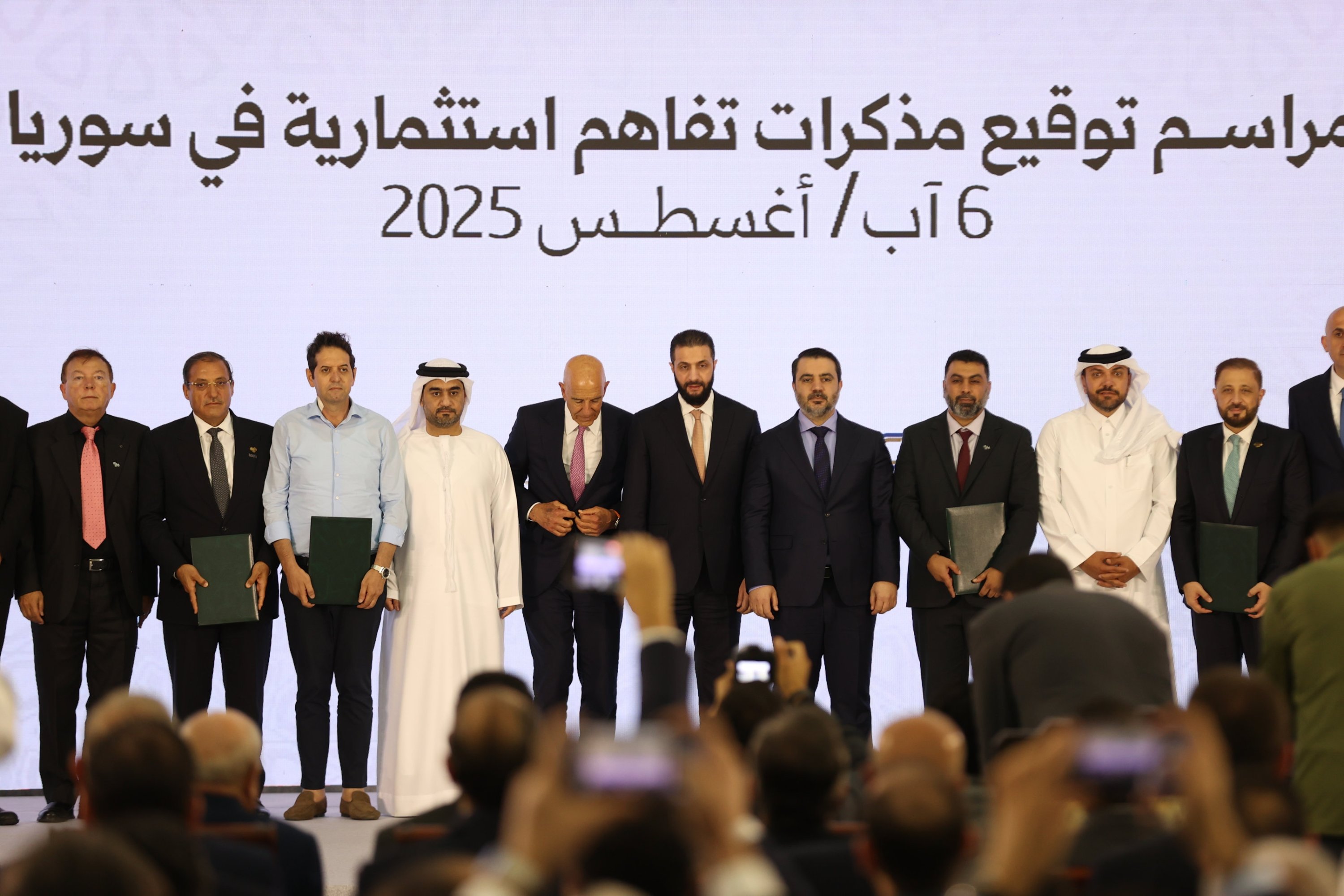
“We successfully completed the construction of Istanbul Airport, Türkiye’s largest infrastructure project, in a record 42 months with a consortium including Cengiz Holding. We then elevated the airport to a global leadership position as a hub with an annual passenger capacity of 90 million.”
“Now, I wholeheartedly believe that with our management experience, engineering strength, technical competence and solution-oriented approach, we will make significant contributions to Damascus’s transformation into a regional air transportation hub,” Kalyoncu added. “I hope the massive investments we have undertaken will mark a turning point for Syria and provide significant support for regional development and stability.”
Alongside the airport investment, Syria signed a series of investment memoranda worth $14 billion on Wednesday, covering 12 strategic projects with several foreign firms.
Talal al-Hilali, director of the Syrian Investment Authority, said the agreements include a $4 billion deal with Qatar’s UCC Holding for the Damascus International Airport project, a $2 billion agreement with the UAE’s national investment corporation to build a metro line in Damascus, and a $2 billion contract with Italy-based UBAKO to develop Damascus Towers.
In July, Syria also signed $6.4 billion of investments with Saudi Arabia as it seeks to rebuild after years of civil war.
Economy
Slovenia bans imports from illegal Israeli settlements over Gaza crisis
The Slovenian government announced on Wednesday a ban on imports of goods from illegal Israeli settlements in the occupied West Bank, in a “symbolic measure” designed to ratchet up diplomatic pressure over the war in Gaza.
Slovenia’s government has frequently criticized Israel over the conflict and last year moved to recognize a Palestinian state as part of efforts to end the fighting in Gaza as soon as possible.
“The actions of the Israeli government … constitute serious and repeated violations of international humanitarian law,” the government said in a statement on Wednesday.
Slovenia “cannot and must not be part of a chain that enables or overlooks” such violations, it said, including the “construction of illegal settlements, expropriations, the forced evictions of the Palestinian population.”
The Slovenian government thus decided to “ban imports of goods originating from Israeli illegal settlements.”
Its latest move represents a “clear reaction to the Israeli government’s policy, which … undermines the possibilities for lasting peace and a two-state solution.”
“While symbolic,” the ban “is a necessary response to the ongoing humanitarian and security situation in Gaza,” Slovenia’s Foreign Minister Tanja Fajon said of the measure.
The government said that it was also examining a ban on exports of goods from Slovenia “destined for (the) illegal settlements,” saying that it would then “decide on further measures.”
According to the STA news agency, citing a government statement from January, Slovenia did not import any goods from Israeli settlements in 2022 and 2024, respectively.
In 2023, imports amounted to some 2,000 euros.
Early in July, Slovenia was the first EU country to ban two far-right Israeli ministers from entering the country.
It declared both Israelis “persona non grata,” accusing them of inciting “extreme violence and serious violations of the human rights of Palestinians” with “their genocidal statements.”
In June 2024, Slovenia’s parliament passed a decree recognizing Palestinian statehood, following in the steps of Ireland, Norway and Spain.
Economy
BoE cuts its main interest rate to 4%, lowest since early 2023
The Bank of England (BoE) lowered its main interest rate by a quarter percentage point to 4% on Thursday, as policymakers seek to bolster the sluggish U.K. economy.
Thursday’s decision was widely anticipated in financial markets as the bank’s Monetary Policy Committee (MPC) balances its responsibility to control inflation against concern that rising taxes and U.S. President Donald Trump’s global trade war may slow economic growth.
The committee voted 5-4 in favor of the cut.
The rate cut is the bank’s fifth since last August, when policymakers began lowering borrowing costs from a 16-year high of 5.25%. The Bank of England’s key rate – a benchmark for mortgages as well as consumer and business loans – is now at the lowest level since March 2023.
“There will be hopes that if loans become cheaper, it will help boost consumer and business confidence but there’s a long way to go,” Susannah Streeter, head of money and markets at Hargreaves Lansdown, said before the decision.
“In the meantime, speculation over potential tax rises in the Autumn Budget may keep households and companies cautious, given the uncertainty over where extra burdens may land.”
Policymakers decided to cut rates even though consumer prices rose 3.6% in the 12 months through June, significantly above the bank’s 2% target. The bank sees the recent rise in consumer prices as a temporary spike, due in part to high energy costs, and expects inflation to fall back to the target next year.
Against the backdrop, policymakers were faced with reports that the government may be forced to raise taxes later this year due to sluggish economic growth, rising borrowing costs and pressure to increase spending.
Britain’s unemployment rate rose to 4.7% in the three months through May, the highest level in four years, signaling that previous tax increases and uncertainty about the global economy are weighing on employers.
The U.K. economy grew 0.7% in the first three months of 2025 after stagnating in the second half of last year.
Economy
Higher US levies on dozens of countries come into effect
Higher U.S. tariffs imposed on dozens of economies came into effect on Thursday, raising the stakes in President Donald Trump’s wide-ranging efforts to reshape global trade.
As an executive order signed last week by Trump took effect, U.S. duties rose from 10% to levels between 15% and 41% for a list of trading partners.
Many products from economies including the European Union, Japan and South Korea now face a 15% tariff, even with deals struck with Washington to avert even steeper levies.
But others like India face a 25% duty – to be doubled in three weeks – while Syria, Myanmar and Laos face staggering levels at either 40% or 41%.
Taking to his Truth Social platform just after midnight, Trump posted: “IT’S MIDNIGHT!!! BILLIONS OF DOLLARS IN TARIFFS ARE NOW FLOWING INTO THE UNITED STATES OF AMERICA!”
The latest tariff wave of “reciprocal” duties, aimed at addressing trade practices Washington deems unfair, broadens the measures Trump has imposed since returning to the presidency.
But these higher tariffs do not apply to sector-specific imports that are separately targeted, such as steel, autos, pharmaceuticals and chips.
Chips tariffs
Trump said Wednesday he planned a 100% tariff on semiconductors – though Taipei said chipmaking giant TSMC would be exempt as it has U.S. factories.
Even so, companies and industry groups warn that the new levies will severely hurt smaller American businesses. Economists caution that they could fuel inflation and weigh on growth in the longer haul.
While some experts argue that the effects on prices will be one-off, others believe the jury is still out.
With the dust settling on countries’ tariff levels, at least for now, Georgetown University professor Marc Busch expects U.S. businesses to pass along more of the bill to consumers.
An earlier 90-day pause in these higher “reciprocal” tariffs gave importers time to stock up, he said.
But although the wait-and-see strategy led businesses to absorb more of the tariff burden initially, inventories are depleting and it is unlikely they will do this indefinitely, he told Agence France-Presse (AFP).
“With back-to-school shopping just weeks away, this will matter politically,” said Busch, an international trade policy expert.
Devil in the details
The tariff order taking effect Thursday also leaves lingering questions for partners that have negotiated deals with Trump recently.
Tokyo and Washington, for example, appear at odds over key details of their tariffs pact, such as when lower levies on Japanese cars will take place.
Washington has yet to provide a date for reduced auto tariffs to take effect for Japan, the EU and South Korea. Generally, U.S. auto imports now face a 25% duty under a sector-specific order.
A White House official told AFP that Japan’s 15% tariff stacks on top of existing duties, despite Tokyo’s expectations of some concessions.
Meanwhile, the EU continues to seek a carveout from tariffs for its key wine industry.
In a recent industry letter addressed to Trump, the U.S. Wine Trade Alliance and others urged the sector’s exclusion from tariffs, saying: “Wine sales account for up to 60 percent of gross margins of full-service restaurants.”
New fronts
Trump is also not letting up in his trade wars.
He opened a new front Wednesday by doubling planned duties on Indian goods to 50%, citing New Delhi’s continued purchase of Russian oil. But the additional 25% duty would take effect in three weeks.
Trump’s order for added India duties also threatened penalties on other countries that “directly or indirectly” import Russian oil, a key revenue source for Moscow’s war in Ukraine.
Existing exemptions still apply, with pharmaceuticals and smartphones excluded for now.
And Trump has separately targeted Brazil over the trial of his right-wing ally, former president Jair Bolsonaro, who is accused of planning a coup.
U.S. tariffs on various Brazilian goods surged from 10% to 50% but broad exemptions, including for orange juice and civil aircraft, are seen as softening the blow.
Still, key products like Brazilian coffee, beef and sugar are hit.
Many of Trump’s sweeping tariffs face legal challenges over his use of emergency economic powers, with the cases likely to ultimately reach the U.S. Supreme Court.
Economy
Chinese shippers defy trade tensions as exports soar in July
China’s exports exceeded forecasts in July, as manufacturers capitalized on a fragile tariff truce between Beijing and Washington to ship goods, particularly to Southeast Asia, ahead of tougher U.S. duties targeting transshipment.
Global traders and investors are waiting to see whether the world’s two largest economies can agree on a durable trade deal by Aug. 12 or if global supply chains will again be upended by the return of import levies exceeding 100%.
U.S. President Donald Trump is pursuing further tariffs, including a 40% duty on goods rerouted to the U.S. via transit hubs that took effect on Thursday, as well as a 100% levy on chips and pharmaceutical products and an additional 25% tax on goods from countries that buy Russian oil.
China’s exports rose 7.2% year-on-year in July, customs data showed on Thursday, beating a forecast 5.4% increase in a Reuters poll and accelerating from June’s 5.8% growth.
Imports grew 4.1%, defying economists’ expectations for a 1.0% fall and climbing from a 1.1% rise in June.
China’s trade war truce with the U.S. – the world’s largest consumer market – ends next week, although Trump hinted that further tariffs may be imposed on Beijing due to its continued purchases of Russian hydrocarbons.
“The trade data suggests that the Southeast Asian markets play an ever more important role in U.S.-China trade,” said Xu Tianchen, senior economist at The Economist Intelligence Unit.
“I have no doubt Trump’s transshipment tariffs are aimed at China, since it was already an issue during Trump 1.0. China is the only country for which transshipment makes sense, because it still enjoys a production cost advantage and is still subject to materially higher U.S. tariffs than other countries,” he added.
China’s exports to the U.S. fell 21.67% last month compared to the same period a year earlier, according to the data, while shipments to the Association of Southeast Asian Nations (ASEAN) rose 16.59% over the same period.
The levies are bad news for many U.S. trading partners, including the emerging markets in China’s periphery that have been buying raw materials and components from the regional giant and furnishing them into finished products as they seek to move up the value chain.
China’s July trade surplus narrowed to $98.24 billion from $114.77 billion in June. Separate U.S. data released on Tuesday showed that the trade deficit with China shrank to its lowest level in more than 21 years in June.
Despite the tariffs, markets showed optimism for a breakthrough between the two superpowers, with China and Hong Kong stocks rising in morning trade. Trump indicated earlier this week that he might meet Chinese President Xi Jinping later this year if a trade deal was reached.
Trade uncertainty
China’s commodities imports painted a mixed picture, with soybean purchases hitting record highs in July, driven by bulk buying from Brazil while avoiding U.S. cargoes. Analysts, however, cautioned that inventory building may have skewed the import figures, masking weaker underlying domestic demand.
“While import growth surprised on the upside in July, this may reflect inventory building for certain commodities,” said Zichun Huang, China economist at Capital Economics, pointing to similarly strong purchases of crude oil and copper.
“There was less improvement in imports of other products and shipments of iron ore continued to cool, likely reflecting the ongoing loss of momentum in the construction sector,” she added.
A protracted slowdown in China’s property sector continues to weigh on construction and broader domestic demand, as real estate remains a key store of household wealth.
Chinese government advisers are stepping up calls to make the household sector’s contribution to broader economic growth a top priority at Beijing’s upcoming five-year policy plan, as trade tensions and deflation threaten the outlook.
Reaching an agreement with the U.S. and the European Union, which have accused China of producing and selling goods at too low a price, would give Chinese officials more room to advance their reform agenda.
However, analysts expect little relief from Western trade pressures. Export growth is projected to slow sharply in the second half of the year, hurt by persistently high tariffs, President Trump’s renewed crackdown on the rerouting of Chinese shipments and deteriorating relations with the EU.
Economy
Public land formula essential for transformation
Founded in 1993, Seba İnşaat continues its growth not only domestically but also internationally through its prestigious projects. Domestically, the company focuses its expansion on Istanbul and Bodrum. Seba İnşaat’s chairman of the board, Engin Keçeli, stated: “I believe there are only three places in the world: New York, Istanbul and London … I don’t consider anywhere else above these.” Stressing the urgency of urban transformation in Istanbul, Keçeli highlighted the importance of resolving land availability issues. Explaining that 60%-65% of Türkiye’s land is state-owned, Keçeli said: “20%-25% of it is idle. Utilizing this land is critical in solving the housing problem.”
Reminding that high land prices are the biggest obstacle to transformation, Keçeli said: “The government has done what it could in this regard. Buildings that have reached the end of their economic life must be transformed.” He stated that zoning increases are not necessary for urban transformation and added: “The biggest obstacles to transformation are landowners’ high demands and rental housing. Due to high rental costs, people don’t want to leave their homes. It doesn’t matter whether it’s in or outside the city. As long as it says Istanbul on the title deed, people will go anywhere.”


4 million square meters of residential projects
The company has bıild 5,000 homes across 4 million square meters. Its latest project, Seba Harmony, developed in Göktürk, has attracted attention. Standing out with its unique location on the Istanbul Airport route, the project is the company’s fourth residential project in Göktürk, following the Seba Göktürk Houses, Seba Reserve and Seba Siena projects. With Seba Harmony, the company is elevating its presence in the region. Located at the entrance of Göktürk, it’s only a one-minute walk to the main road and five minutes to the metro.


Developed on a plot of 23,000 square meters, the project consists of 200 apartments and 13 blocks. Featuring low-rise horizontal architecture, the project includes 2+1 mid-floor and garden flats, 3+1 mid-floor and garden flats, 3.5+1 garden duplexes, 4+1 mid-floor, and 4.5, 5.5+1 garden duplexes. Apartment sizes range from 104 to 350 square meters. With a price of $5,000 per square meter, unit prices range from $500,000 to $1.5 million. Deliveries are planned by the end of 2026.

Money held in deposits
Explaining that high deposit interest rates negatively affect housing sales, Keçeli said: “Demand for housing is low, supply is excessive. Those with money keep it in deposits, and those without cannot borrow due to high mortgage interest rates. Unless deposit rates fall below 30%, expected activity in housing sales won’t occur. If Istanbul’s sales speed is 10 kilometers, Bodrum’s is around 1 kilometer.” Keçeli also stated that high private school fees negatively impact housing sales: “White-collar workers are working to pay tuition fees, not to buy homes.”
Investments on four fronts
Seba İnşaat currently has four ongoing projects. Two of these – Seba Neva and Seba Gardenia – are located in Zekeriyaköy. Keçeli noted that the projects’ sales were launched around the time of the Feb. 6, 2023, earthquake that deeply shook Türkiye: “We started our villa project at that time. We sold the 62 villas that we built there, each 350 square meters, in one and a half to two months. We’ll deliver them between the end of September and the beginning of October. Earthquake fears triggered strong demand in many districts, and the cost-benefit analysis of living and pricing has become clearly established,” he said. The company also has two urban transformation projects in the U.S.
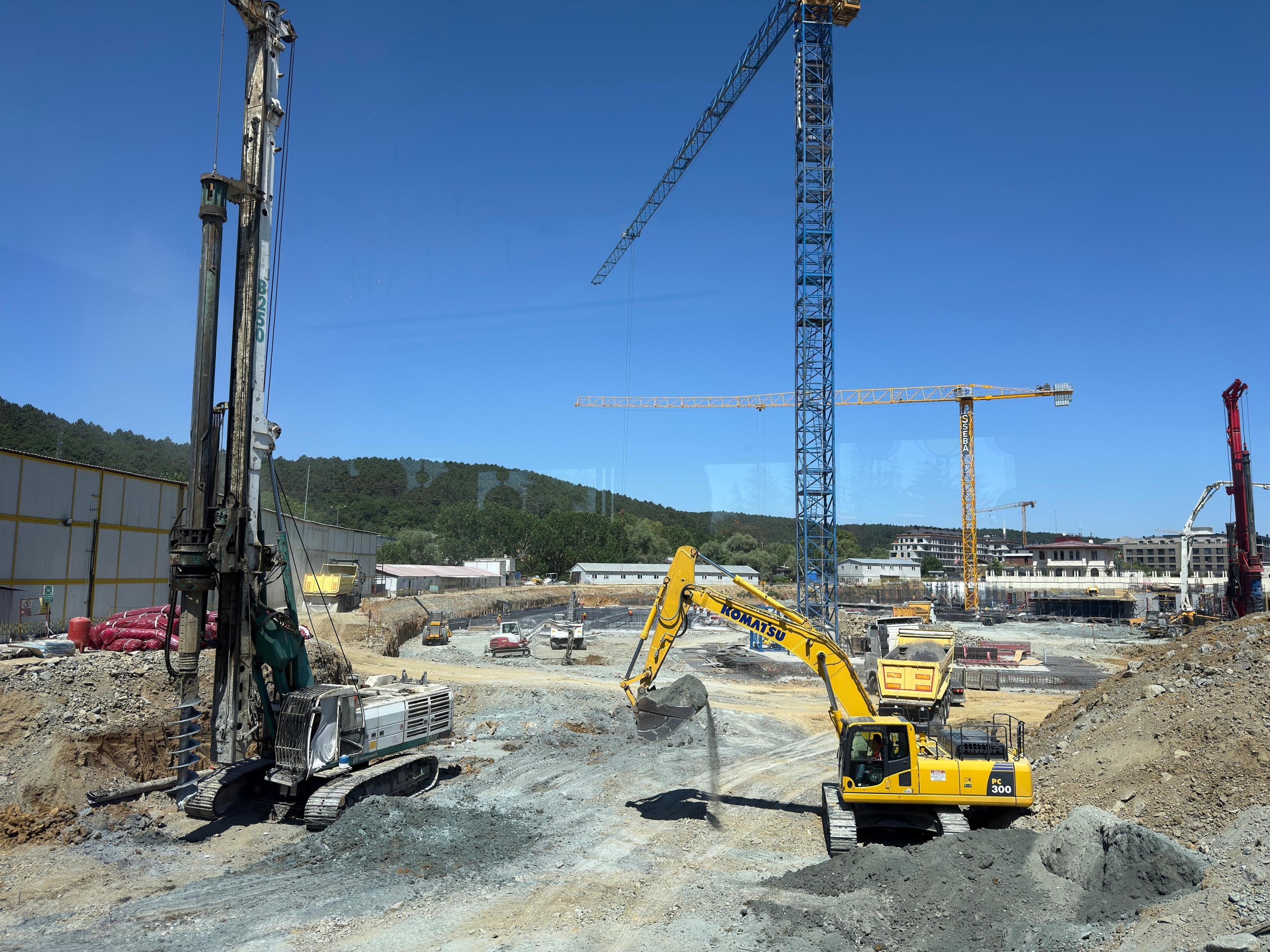
Second Bodrum project coming
Outside of Istanbul, Seba focuses on the popular vacation spot of Bodrum. Having launched the Gölköy 1 project there in recent years, the company will start a new project in Gölköy next year. Keçeli stated they built 45 completely detached villas on 73 acres in Gölköy 1. “In our previous project, the villas ranged in size from 425 to 540 square meters. In our new project, there will be 85 villas. I have a few brands in mind for the hotel that will be located here, but we haven’t reached an agreement with anyone yet,” he said.
-
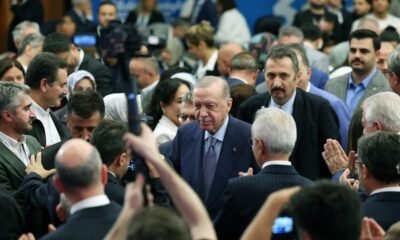
 Politics2 days ago
Politics2 days agoAK Party academy revolutionizes Turkish political training
-

 Daily Agenda2 days ago
Daily Agenda2 days agoHalf of us and hearts are comfortable nests peaceful
-

 Economy2 days ago
Economy2 days agoNorway orders review of its wealth fund’s Israel investments
-

 Daily Agenda2 days ago
Daily Agenda2 days agoThe case is over
-
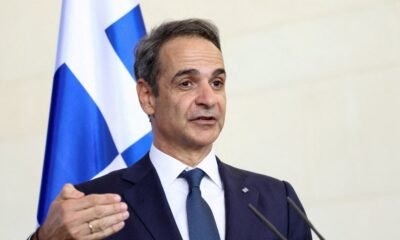
 Politics2 days ago
Politics2 days agoGreece warns Türkiye over EU funds, ties with Athens
-

 Sports3 days ago
Sports3 days agoSon bids adieu in Seoul as Spurs welcome storm with Maddison’s injury
-

 Politics3 days ago
Politics3 days agoTurkish main opposition mayor reportedly funded journos with bribe cash
-
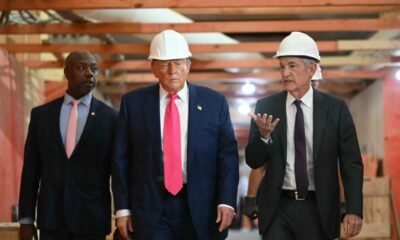
 Economy2 days ago
Economy2 days agoTrump says to announce Fed picks soon, Bessent to stay at Treasury




